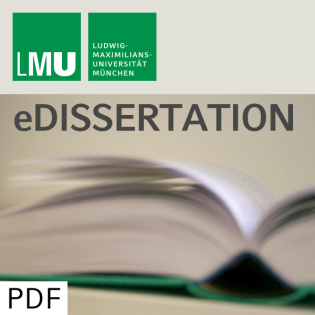
Nervenzupfpräparation (nerve fiber teasing) in der Diagnostik peripherer Neuropathien beim Tier
Beschreibung
vor 23 Jahren
NERVE FIBER TEASING AS A DIAGNOSTIC AID IN DETECTION OF PERIPHERAL
NEUROPATHIES – METHODOLOGY AND INTERPRETATION Nerve biopsies are
widely used for the investigation of peripheral neuropathies in man
and animals in addition to clinical and electrodiagnostic
evaluation . Besides light- and electron microscopy, single nerve
fiber teasing provides a convincing method in the approach of a
correct diagnosis. It is the only practable method for inspection
of myelinated fibers along their path. Moreover, teasing preparates
are most indicative for the regenerative capabilities of myelinated
fibers. Besides knowledge of pathomorphological alterations, the
investigator needs some experience in identifying artefacts and
autolytic changes since they can look very alike and, thus, may
lead to misdiagnosis. Therefore, it was the aim of this study to
provoke pure artificial and autolytic changes in peripheral nerves.
For evaluating divergent fixation-protocols, 171 samples were taken
to prepare about 51300 single teased fibers. Like this, phenomena
of delayed fixation as well as of hyperfixation could be described.
To avoid artefacts, we recommend a fixation in 2,5% glutaraldehyde
for 1 to 2 hours. Minor autolytic changes could already be observed
1 to 2 hours post mortem. Interpretation became nearly impossible
due to desintegration of the myelin sheath after 3 to 4 days .
Those results, together with the samples of 57 selected cases
(17000 single teased fibers) enabled to establish a list of
phenomena seen with pathology, artefacts or autolysis. This
categorization substantially increases objective diagnosis when
evaluating teased fibers. Additionally, clinical signs were
correlated with their neuropathological findings. In order to
improve the separation of nerve fibers, the value of collagenolytic
agents was investigated. About 15700 single fibers from 72 samples
were slided. Teasing of samples that had already been fixed could
be improved by incubation in collagenase for 1 hour. These findings
proved very helpful for investigating referred biopsies which often
arrive in a hyperfixed state. Collagenolytic glycin buffering is
not advisable in this case, although it did facilitate the removal
of the connective tissue of unfixed nerves, when samples were
bathed in it. Moreover the often sparse amount of biopsied material
can be the limiting factor of diagnosis. Therefore,
post-teasing-light and electron microscopy is a useful approach.
Even interstitial components can be visualized, and treatment
allows for a correlation of suspicious regions within teased fibers
with cross-section investigations. To widen the diagnostic range
different methods to stain single components of teased fibers were
evaluated. The thus established labelling of myelin sheathing or of
the axon, respectively, by different staining protocols for the
fluorochrome 5,5`-diphenyl-9-ethyl-oxacarbocyanine is helpful. This
procedure for axonal investigation proved superior to
whole-mount-immunohistochemical approaches as only established the
paraformaldehyde fixation allowed for a selective staining of
neurofilaments along the entire axon.
NEUROPATHIES – METHODOLOGY AND INTERPRETATION Nerve biopsies are
widely used for the investigation of peripheral neuropathies in man
and animals in addition to clinical and electrodiagnostic
evaluation . Besides light- and electron microscopy, single nerve
fiber teasing provides a convincing method in the approach of a
correct diagnosis. It is the only practable method for inspection
of myelinated fibers along their path. Moreover, teasing preparates
are most indicative for the regenerative capabilities of myelinated
fibers. Besides knowledge of pathomorphological alterations, the
investigator needs some experience in identifying artefacts and
autolytic changes since they can look very alike and, thus, may
lead to misdiagnosis. Therefore, it was the aim of this study to
provoke pure artificial and autolytic changes in peripheral nerves.
For evaluating divergent fixation-protocols, 171 samples were taken
to prepare about 51300 single teased fibers. Like this, phenomena
of delayed fixation as well as of hyperfixation could be described.
To avoid artefacts, we recommend a fixation in 2,5% glutaraldehyde
for 1 to 2 hours. Minor autolytic changes could already be observed
1 to 2 hours post mortem. Interpretation became nearly impossible
due to desintegration of the myelin sheath after 3 to 4 days .
Those results, together with the samples of 57 selected cases
(17000 single teased fibers) enabled to establish a list of
phenomena seen with pathology, artefacts or autolysis. This
categorization substantially increases objective diagnosis when
evaluating teased fibers. Additionally, clinical signs were
correlated with their neuropathological findings. In order to
improve the separation of nerve fibers, the value of collagenolytic
agents was investigated. About 15700 single fibers from 72 samples
were slided. Teasing of samples that had already been fixed could
be improved by incubation in collagenase for 1 hour. These findings
proved very helpful for investigating referred biopsies which often
arrive in a hyperfixed state. Collagenolytic glycin buffering is
not advisable in this case, although it did facilitate the removal
of the connective tissue of unfixed nerves, when samples were
bathed in it. Moreover the often sparse amount of biopsied material
can be the limiting factor of diagnosis. Therefore,
post-teasing-light and electron microscopy is a useful approach.
Even interstitial components can be visualized, and treatment
allows for a correlation of suspicious regions within teased fibers
with cross-section investigations. To widen the diagnostic range
different methods to stain single components of teased fibers were
evaluated. The thus established labelling of myelin sheathing or of
the axon, respectively, by different staining protocols for the
fluorochrome 5,5`-diphenyl-9-ethyl-oxacarbocyanine is helpful. This
procedure for axonal investigation proved superior to
whole-mount-immunohistochemical approaches as only established the
paraformaldehyde fixation allowed for a selective staining of
neurofilaments along the entire axon.
Weitere Episoden


In Podcasts werben







Kommentare (0)